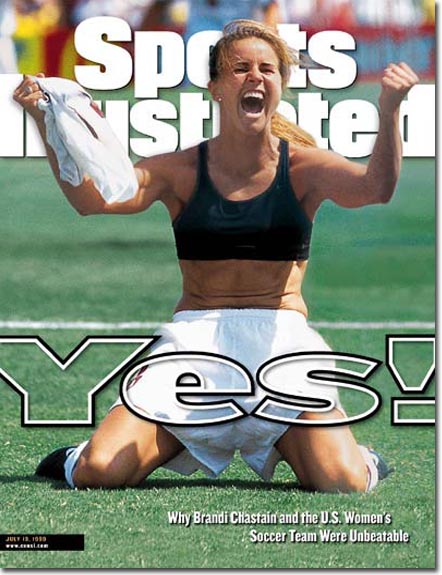
The events of the summer of 1999 left a lasting legacy. Even the Sydney Olympics in 2000 when the United States fell to Norway 3-2 in a thriller of a match and subsequent World Cups in 2003 and 2007 were not as memorable as the ‘99 victory. Team USA’s gold medals in Athens and Beijing did not receive widespread acclaim, nor did their victories achieve the same perceived historical and social importance as the victory in 1999. The popularity of the sport had fueled talk of starting a women’s league even prior to the final match, but the United States win in the final turned the formation of a professional league from a dream into a reality. “The 1999 Women’s World Cup…created a springboard for the Women’s United Soccer Association, which billed itself as the world’s only fully professional women’s soccer league.”[1] WUSA came and went, folding prior to the 2003 World Cup; then came WPS, which folded in 2012. Now, the newest iteration, the NWSL, is hoping to do what it’s predecessors could not and become a permanent sporting fixture. Yet even with all of this fluctuation, the impact of the 1999 World Cup has remained undiminished. In many ways, the success of the ’99 World Cup trumped what many thought was possible in the world of women’s sports and created a template for success in the future.
Furthermore, the Brandi Chastain sports bra incident and her subsequent posing in Gear magazine 1999 raised issues surrounding gender politics in women’s sports. It exposed a new side of women’s sports, one in which beauty and sexiness matter, and may even trump the importance of athletic talent. Certainly, women in sports were unafraid to be both feminine and tough, a combination that has become more and more prevalent as female athletes come further into the spotlight.
It certainly was an epic event that seemed impossible to follow. While the next few World Cups were not quite as successful in terms of captivating the American audience, the 2011 World Cup in Germany brought the American public firmly back in the women’s soccer corner due to astounding plays and heartstopping wins by the US squad. Now, with the third iteration of a professional soccer league having just finished it’s inaugral season, it will be interesting to see what the newfound media darlings of the US do with their success–and if it carries over financially for the league. With the 2015 World Cup looming on the horizon, and a number one world ranking under their belts, one thing we can say for certain is that these ladies have some unfinished business to attend to.
However, this world–and this upcoming World Cup–is entirely different than the world the women faced in ’99. Teams are tougher. There’s more competition. The infamous Marta has taken the soccer world by storm, and she plays for Brazil, not the US. There are leagues in Europe that are far better established than the NWSL. The women may be number one, but that is a tenuous hold they must be prepared to defend.
From “The Greatest Team You’ve Never Heard Of” to the face of international Women’s Soccer, the US ladies have made some serious strides for themselves and their sport.
[1] Michael Hiestand and Oscar Dixon, “Unlike WUSA, WNBA has NBA,” USA Today, 16 September 2003, Sports, p. 03c.



Pingback: Highest Paid Women Soccer Players in the World 2016
We have the best soccer players in the USA,but they will not win until they play like a TEAM instead of great individuals.I hope I am wrong BUT.
Pingback: Soccer Politics / The Politics of Football » Carla Overbeck and the 99ers
Pingback: CrossFit Meridian